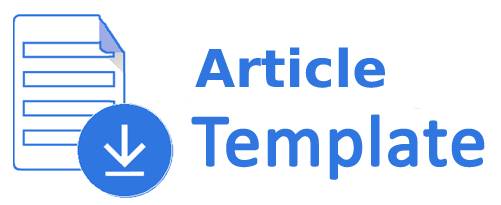Artificial Intelligence (AI): Advancing the State of Creativity or Replacing Human Talent?
DOI:
https://doi.org/10.17821/srels/2025/v62i1/171689Keywords:
AI Art, Copyright, Creativity, Legal Questions, Machine Learning, Art and TechnologyAbstract
The latest advancements in machine learning have led to a notable increase in interest in Artificial Intelligence (AI) research. The integration of AI and machine learning is becoming more prevalent across various sectors within different industries. AI presents opportunities for businesses and employees by facilitating enhanced data analysis, improved security frameworks, efficient automation, and more advanced technological interactions. This has encouraged further exploration of potential AI applications in a range of fields, as well as important discussions regarding challenges such as the interpretability of AI systems, the limitations of machine intelligence, associated risks, and societal issues. As the examination of the ‘human versus AI’ relationship progresses, one particularly intriguing area of interest is the creation and understanding of art. The rise of a new category of tools has the potential to generate high-caliber artistic content across various domains including visual arts, concept art, music, fiction, literature, video, and animation. These tools, equipped with generative capabilities, are expected to transform the creative processes related to idea generation and production. This creativity change is projected to have a significant impact on multiple sectors of society. Understanding the consequences of generative AI and developing effective policies necessitates an interdisciplinary scientific approach that encompasses culture, economics, law, algorithms, and the interaction between technology and creativity. The position advanced in this paper is that generative AI does not signify the end of artistic endeavours; instead, it introduces a new medium with its unique features. Accordingly, the paper explores the ramifications of this innovative medium on creators, considering factors such as aesthetics and culture, ownership and attribution, the future trajectory of creative activities, and its influence on the contemporary media landscape. Within these contexts, the paper identifies key research questions related to Artificial Intelligence and its advantageous uses.
Downloads
Downloads
Published
How to Cite
Issue
Section
License
Copyright (c) 2025 Journal of Information and Knowledge

This work is licensed under a Creative Commons Attribution-NonCommercial-NoDerivatives 4.0 International License.
All the articles published in Journal of Information and Knowledge are held by the Publisher. Sarada Ranganathan Endowment for Library Science (SRELS), as a publisher requires its authors to transfer the copyright prior to publication. This will permit SRELS to reproduce, publish, distribute and archive the article in print and electronic form and also to defend against any improper use of the article.
References
Andersen, S. (2022). The alt-right manipulated my comic. Then A.I. claimed it. https://www.nytimes.com/2022/12/31/opinion/sarah-andersen-how-algorithim-took-my-work.html
Baio, A. (2022). AI Data Laundering: How Academic and Nonprofit Researchers Shield Tech Companies from Accountability. https://waxy.org/2022/09/ai-data-laundering-how-academicandnonprofit-researchers-shield-tech-companies-fromaccountability/
Baio, A. (2022). Exploring 12 Million of the 2.3 Billion Images Used to Train Stable Diffusion’s Image Generator. https://waxy.org/2022/08/exploring-12-million-of-the-imagesusedto-train-stable-diffusions-image-generator/
Barder, O. (2017). Katsuhiro Otomo On Creating ‘Akira’ And Designing The Coolest Bike In All Of Manga And Anime. https://www.forbes.com/sites/olliebarder/2017/05/26/katsuhiro-otomo-on-creating-akira-and-designing-thecoolestbike-in-all-of-manga-and-anime/
Beebe, B. (2008). An Empirical Study of U.S. Copyright Fair Use Opinions, 1978-2005. University of Pennsylvania Law Review, 549.
Benjamin, R. (2020). Race after technology: Abolitionist tools for the new jim code. Social Forces, 98(4), 1-3. https://doi.org/10.1093/sf/soz162
Boden, M. (1994). What is creativity? In M. A. Boden (Ed.), Dimenions of Creativity (pp. 75–117). Cambridge: The MIT Press. https://doi.org/10.7551/mitpress/2437.003.0006
Boden, M. (2004). The creative mind: myths and mechanisms. London: Routlege. https://doi.org/10.4324/9780203508527
Brodskaya, N. K. (2012). Claude Monet. New York: Parkstone International.
Burian, J. (1977). The Scenography of Josef Svoboda, USA: Wesleyan University Press. USA: Wesleyan University Press.
Chen, C., Fu, J., & Lyu, L. (2023). A pathway towards responsible AI generated content. https://doi.org/10.48550/ARXIV.2303.01325
Clarke, N. (2023). A Concerning Trend. https://neil-clarke.com/a-concerning-trend/
Cole, S. (2023). Netflix made an anime using AI due to a ‘labor shortage,’ and fans are pissed. Vice: https://www.vice.com/en/article/netflix-anime-dog-and-the-boy-ai-generated-art/
Dewey, J. (1934). Art as Experience. New York: Penguin Group Inc.
Epstein, Z., Levine, S., Rand, D. G., Rahwan, I. (2020). Who gets credit for AI-generated art? iScience, 23(9), 15-73. https://doi.org/10.1016/j.isci.2020.101515 PMid:32920489 PMCid:PMC7492988
EU. (2021). The Artificial Intelligence Act. Brussels: European Comission.
Freeman, A. A. (2001). Image Quilting for Texture Synthesis and Transfer. https://dl.acm.org/doi/pdf/10.1145/383259.383296
Garcia, T. (2023). David Guetta Replicated Eminem’s Voice in a Song Using Artificial Intelligence. https://variety.com/2023/music/news/david-guetta-eminem-artificialintelligence1235516924/
Gillotte, J. (2020). Copyright Infringement in AI-Generated Artworks. UC Davis Law Review, 37.
GOI. (2024). Economic Survey of 2023-2024. New Delhi: MoF.
Hanna, M. K. (2022). The subjects and stages of AI dataset development: A framework for dataset accountability. https://doi.org/10.2139/ssrn.4217148
Irene, M. M. (2021). Artificial intelligence and moral rights. AI and Society, 319-329. https://doi.org/10.1007/s00146-020-01027-6
Millman, Z. (2023). Yes, Secret Invasion’s opening credits scene is AI-made — Here’s why. https://www.polygon.com/23767640/ai-mcu-secret-invasion-opening-credits.
Noll, A. M. (1994). The beginnings of computer art in the United States. Leonardo, 39-44. https://doi.org/10.2307/1575947
Noll, A. M. (1967). The digital computer as a creative medium. Spectrum, 89-95. https://doi.org/10.1109/MSPEC.1967.5217127
Nzegwu, N. (2005). Art and community: A social conception of beauty and individuality. K. Wiredu (eds.) A companion to African Philosophy. Wiley Backwell, Malden. https://doi.org/10.1002/9780470997154.ch34
Riede, L. (2023). Has copyright caught up with the AI Act?https://technologyquotient.freshfields.com/post/102iewc/ has-copyright-caught-up-with-the-ai-act
Rombach, R., Blattmann, A., Lorenz, D., Esser, P., Ommer, B. (2022). High-Resolution Image Synthesis with Latent Diffusion Models. https://doi.org/10.1109/CVPR52688.2022.01042
Schuhmann, C., Beaumont, R., Vencu, R., Gordon, C., Wightman, R., Cherti, M., …, Jitsev, J. (2022). LAION-5B: An open large-scale dataset for training next generation image-text models. https://arxiv.org/abs/2210.08402
State, U. (2019). Authors, Attribution, and Integrity: Examining Moral Rights in the United States. Washington: US Copyright Office.
State, U. (2023). Zarya of the Dawn. US Copyright Office, Washington.
Vincent, J. (2023). AI art tools Stable Diffusion and Midjourney targeted with copyright lawsuit. https://www.theverge.com/2023/1/16/23557098/generative-ai-art-copyrightlegal-lawsuit-stable-diffusion-midjourney-deviantart
Vincent, J. (2022). Getty Images bans AI-generated content over fears of legal challenges. https://www.theverge.com/2022/9/21/23364696/getty-images-ai-ban-generatedartwork-illustration-copyright
Willett, J. (1986). The Theatre of Erwin Piscator, Half a Century of Politics in the Theatre. Methuen, London.
Zapata, S. (2023). Who Makes the Art in Utopia? [Motion Picture].
Zhou, V. (2023). AI is already taking video game illustrators’ jobs in China. https://restofworld.org/2023/ai-china-videogame-layoffs-illustrators/

 Awnish Murari
Awnish Murari








